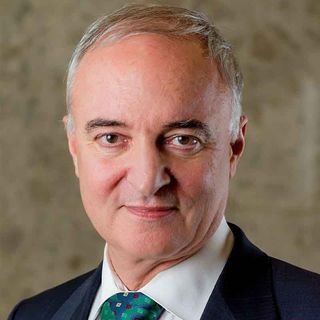Are you concerned about unusual symptoms following your abdominoplasty procedure? Post-surgical complications can turn your dream results into a nightmare, causing physical discomfort, emotional distress, and potentially requiring costly revision surgery. Recognizing the warning signs of a botched tummy tuck early can make the difference between a minor adjustment and a major medical emergency.
At Northwest Face & Body, our experienced surgeons help patients identify and address tummy tuck complications promptly, ensuring the best possible outcomes for your body contouring journey.
7 Common Signs of a Bad Tummy Tuck
Uneven or Asymmetrical Results
One of the most common signs of a tummy tuck gone wrong is asymmetry. The abdomen may appear lopsided, with one side looking tighter or higher than the other. In some cases, the belly button is positioned unnaturally, drawing attention to surgical imperfections. Symmetry is key to natural-looking abdominoplasty results, and significant imbalance often indicates the need for revision tummy tuck surgery.
Excess Skin or “Dog Ears”
A properly performed tummy tuck should remove excess skin completely, but poor surgical technique may leave behind folds or “dog ears” at the incision site. These protrusions create visible bulges, causing clothing to fit awkwardly and eroding your confidence. Excess skin left behind can often be corrected through minor revision surgery, but it indicates an incomplete initial procedure.
Poorly Placed or Visible Scars
While some scarring is unavoidable after abdominoplasty, skilled tummy tuck surgeons place incisions low on the abdomen so they can be hidden beneath underwear or swimwear. A bad tummy tuck may result in scars that are too high, uneven, or thickened. Hypertrophic scars or keloids may also form if healing is not managed properly, leaving a constant reminder of the procedure.
Irregular Abdominal Contours
A smooth, firm abdominal contour is the goal of any tummy tuck surgery. When performed incorrectly, patients may notice lumps, dents, or uneven fat distribution across the abdomen. These irregularities are often due to poor technique in skin tightening, liposuction, or muscle repair. Instead of achieving a toned look, the abdomen may appear distorted or unnatural.
Belly Button Concerns
The belly button plays an important role in the natural appearance of the abdomen. A botched tummy tuck may leave the navel looking too large, too small, misplaced, or unnaturally shaped. In some cases, the belly button appears stretched or scarred, making it obvious that surgery was performed. Revision surgery can often restore a more natural appearance to the umbilicus.
Prolonged Pain or Complications
While some discomfort is expected during tummy tuck recovery, ongoing pain, excessive swelling, or fluid accumulation may point to complications such as seromas, hematomas, or infections. These signs indicate that the healing process is not progressing normally. Moreover, these issues not only affect the final aesthetic result but may also pose serious risks to your overall health if not treated promptly.
Causes of Bad Tummy Tuck Results
While most abdominoplasty procedures deliver smooth and natural outcomes, several factors can contribute to poor results. Understanding the common causes helps patients recognize what went wrong and how to prevent issues in the future.
Surgeon Inexperience
Choosing a board-certified plastic surgeon with extensive experience in tummy tuck surgery significantly reduces the risk of complications. Inexperienced surgeons may lack the technical skill for proper tissue handling, aesthetic judgment, and muscle repair technique necessary for optimal abdominoplasty results.
Poor Surgical Technique
Technical errors during tummy tuck surgery may include:
- Inadequate blood supply preservation
- Excessive tension on surgical closures
- Improper muscle repair or plication
- Insufficient fat removal or over-resection
- Incorrect positioning of the belly button
Patient Non-Compliance
Following post-operative instructions is crucial for successful tummy tuck recovery. Patients who resume strenuous activities too soon, smoke during the healing period, or neglect wound care instructions significantly increase their complication risk and chances of a bad tummy tuck outcome.
Pre-Existing Health Conditions
Medical conditions such as diabetes, obesity, poor circulation, and autoimmune disorders can negatively impact healing after abdominoplasty. Patients should disclose all medical conditions during their consultation to ensure appropriate surgical planning and risk assessment.
What to Do If You Experience Tummy Tuck Complications
The first step is to address your concerns with the plastic surgeon who performed your abdominoplasty. If you remain concerned about your results or possible complications, consider seeking a second opinion from another board-certified plastic surgeon. Finding a qualified revision specialist experienced in correcting botched tummy tuck procedures is essential.
You don’t need to have textbook symptoms to justify calling your surgeon. If your pain medication isn’t providing adequate relief, your incision looks abnormal, you notice signs of infection, or you’re simply feeling uneasy about your recovery, don’t wait. Early intervention can prevent minor issues from becoming major complications.
Connect with Northwest Face & Body for a consultation to discuss your tummy tuck concerns and explore revision options.
Why Choose Northwest Face & Body
At Northwest Face & Body, we understand that tummy tuck surgery is a significant decision. Our board-certified plastic surgeons, Dr. Ludwig Allegra and Dr. Tarak Patel, bring years of experience and specialized expertise to every abdominoplasty procedure they perform. We prioritize patient safety, natural-looking results, and comprehensive aftercare support.
Our facility offers:
- State-of-the-art surgical technology
- Personalized abdominoplasty treatment plans
- Comprehensive pre-operative consultations
- Detailed post-operative care instructions
- Ongoing support throughout your recovery journey
- Expertise in revision tummy tuck procedures
Whether you’re considering your first tummy tuck or need revision surgery to correct a botched abdominoplasty, Northwest Face & Body is committed to helping you achieve your aesthetic goals safely and effectively.
Schedule your consultation today to discuss your concerns and explore your options for achieving your ideal abdominal contour.
FAQs About Bad Tummy Tucks
Q: How long does it take to see signs of a bad tummy tuck?
A: While some tummy tuck complications appear during the initial recovery period, others become noticeable only after healing has progressed. Most issues become apparent within the first few weeks to months after abdominoplasty surgery. However, final results typically are not fully visible until three to six months post-surgery.
Q: Can a bad tummy tuck be fixed?
A: Yes, revision tummy tuck surgery can address most complications from a poorly performed abdominoplasty. Northwest Face & Body’s surgeons, Dr. Allegra and Dr. Patel, specialize in corrective procedures to repair botched tummy tucks and restore natural-looking results.
Q: What percentage of tummy tucks have complications?
A: Studies show that approximately 10-20% of patients experience some form of abdominoplasty complications. Choosing an experienced, board-certified plastic surgeon significantly reduces this risk. Minor complications are more common than major ones.
Q: How can I prevent tummy tuck complications?
A: To minimize your risk of a bad tummy tuck, choose a board-certified plastic surgeon with extensive abdominoplasty experience, follow all pre-operative and post-operative instructions carefully, maintain a stable weight before and after surgery, avoid smoking for at least six weeks before and after the procedure, and attend all follow-up appointments.
Q: When should I contact my surgeon after a tummy tuck?
A: Contact your surgeon immediately if you experience fever above 101°F, increasing or severe pain, unusual or foul-smelling drainage, spreading redness around incisions, breathing difficulties, chest pain, leg swelling, or any other concerning symptoms. Early intervention is crucial for preventing serious complications.
Q: How long is the recovery period for a tummy tuck?
A: Pain and swelling should improve significantly within four weeks after abdominoplasty, though some residual swelling may persist for up to three months. You can typically return to normal daily activities within four weeks, but it’s important to avoid core strengthening exercises and heavy lifting for at least six weeks. Full recovery takes approximately three to six months.
Q: Will I have permanent scarring after a tummy tuck?
A: Most tummy tucks leave a scar extending from hip to hip along the lower abdomen, which can be hidden by most underwear and swimwear. While abdominoplasty scars are permanent, their appearance typically improves significantly over 6-12 months with proper care. Skilled surgeons minimize scar visibility through precise incision placement and closure techniques.
Q: What is the difference between a tummy tuck and abdominoplasty?
A: Tummy tuck and abdominoplasty are two names for the same surgical procedure. Abdominoplasty is the medical term, while tummy tuck is the more commonly used colloquial term. Both refer to the surgical removal of excess skin and fat from the abdomen, along with tightening of the abdominal muscles.
Q: How much does revision tummy tuck surgery cost?
A: The cost of revision tummy tuck surgery varies depending on the extent of correction needed, your geographic location, and your surgeon’s experience. During your consultation at Northwest Face & Body, we’ll provide a detailed cost estimate based on your specific revision needs.
Read more:
Pregnancy After a Tummy Tuck What Happens and How to Prepare






